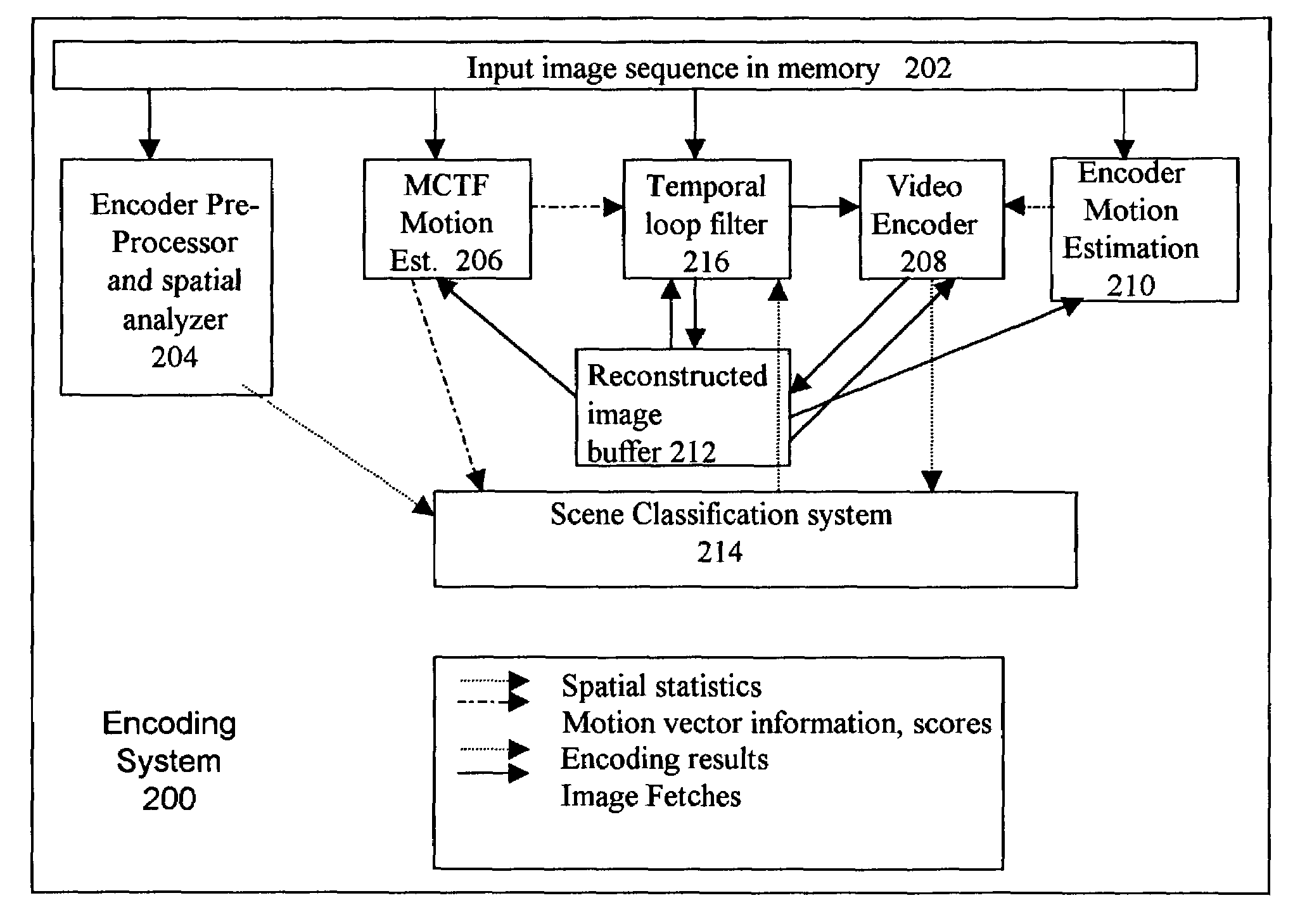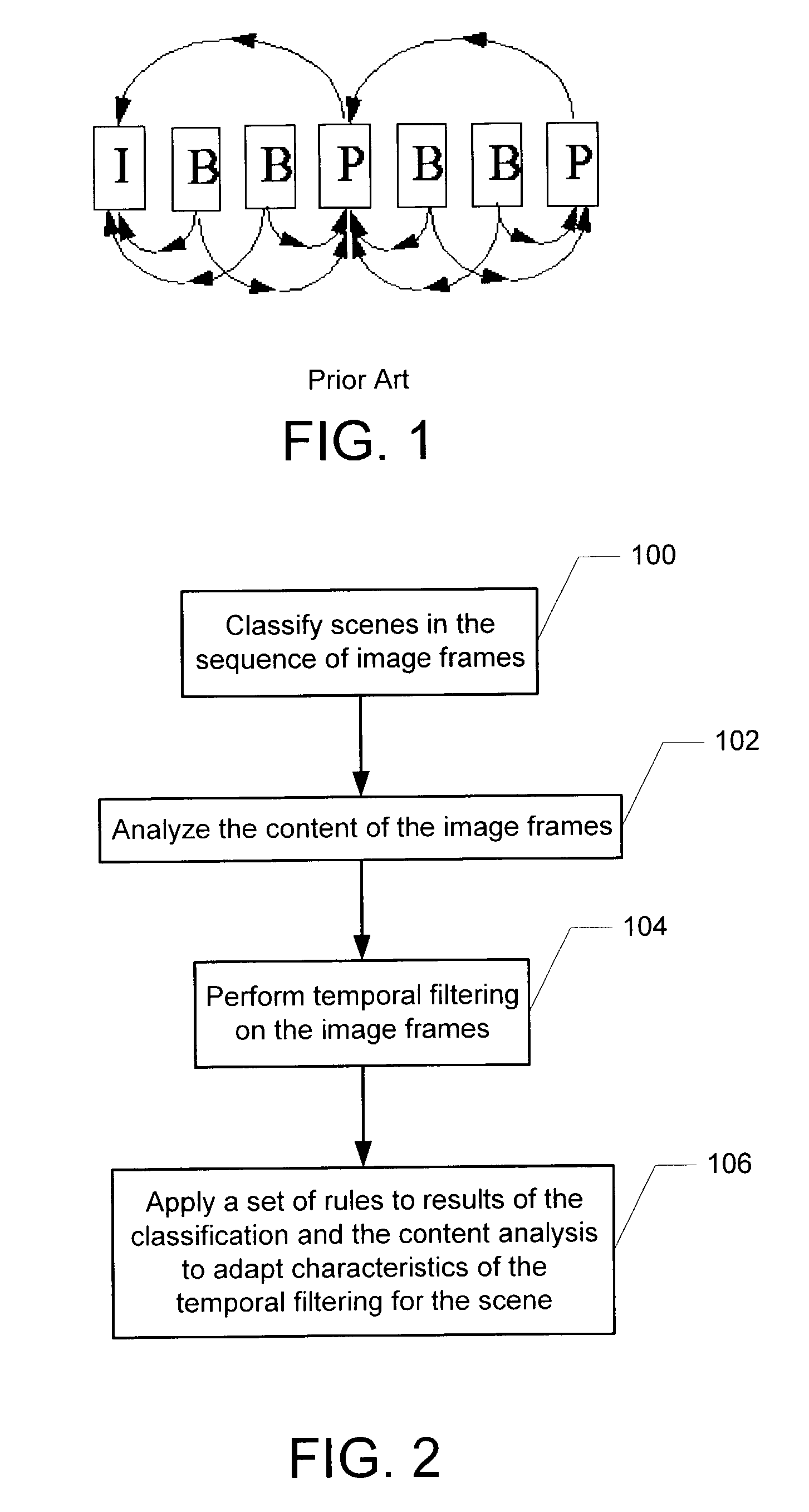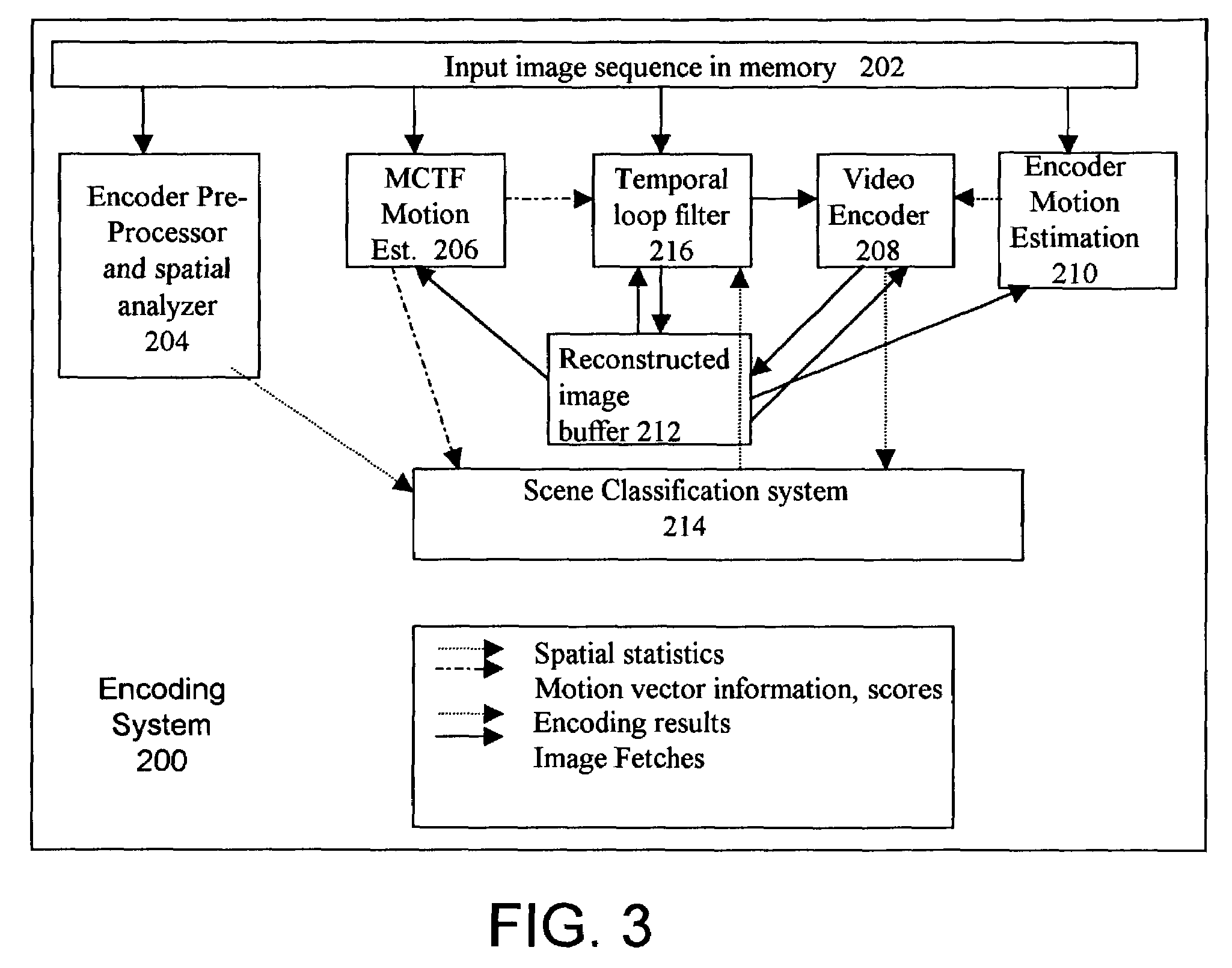Content adaptive video processor using motion compensation
a video processor and motion compensation technology, applied in the field of video compression and decompression methods, can solve the problems of loading system, image motion, rotation and zoom, error propagation of p-frames, etc., and achieve the effect of reducing artifacts in the image sequen
- Summary
- Abstract
- Description
- Claims
- Application Information
AI Technical Summary
Benefits of technology
Problems solved by technology
Method used
Image
Examples
Embodiment Construction
[0032]The present invention relates to video processing techniques for removing encoding artifacts. The following description is presented to enable one of ordinary skill in the art to make and use the invention and is provided in the context of a patent application and its requirements. Various modifications to the preferred embodiments and the generic principles and features described herein will be readily apparent to those skilled in the art. Thus, the present invention is not intended to be limited to the embodiments shown but is to be accorded the widest scope consistent with the principles and features described herein.
[0033]The compressed video produced in a digital set top box or DVD player often contains compression artifacts, which are particularly noticeable on large displays. The present invention improves image quality of the video by employing motion compensated techniques during a video “post-decode” processing stage for temporal filtering for noise and compression a...
PUM
 Login to View More
Login to View More Abstract
Description
Claims
Application Information
 Login to View More
Login to View More - R&D
- Intellectual Property
- Life Sciences
- Materials
- Tech Scout
- Unparalleled Data Quality
- Higher Quality Content
- 60% Fewer Hallucinations
Browse by: Latest US Patents, China's latest patents, Technical Efficacy Thesaurus, Application Domain, Technology Topic, Popular Technical Reports.
© 2025 PatSnap. All rights reserved.Legal|Privacy policy|Modern Slavery Act Transparency Statement|Sitemap|About US| Contact US: help@patsnap.com



